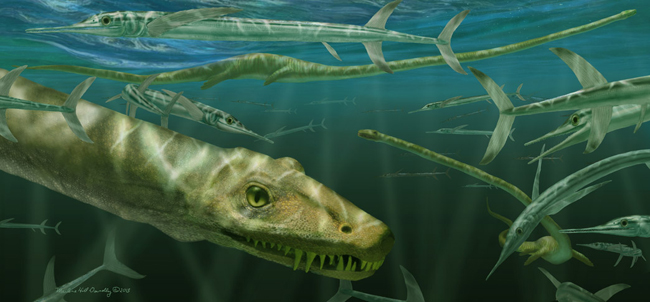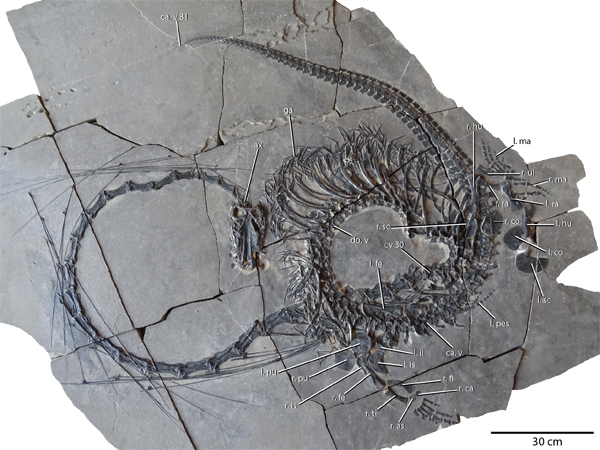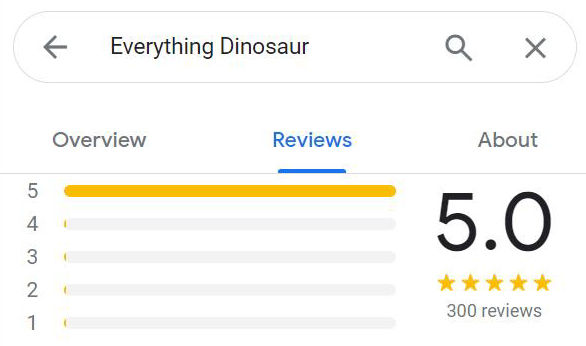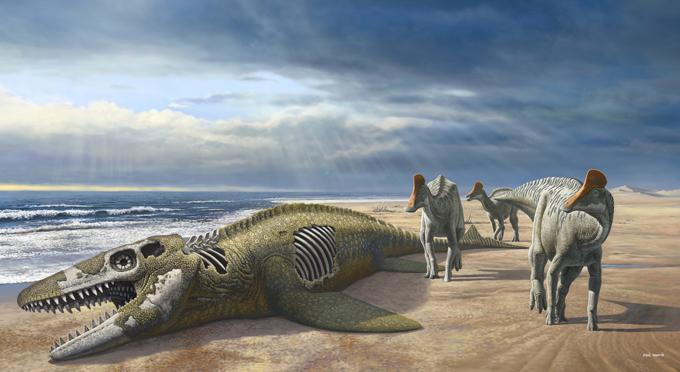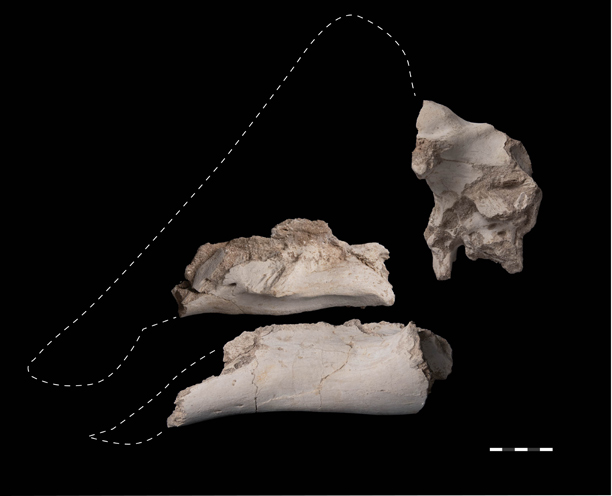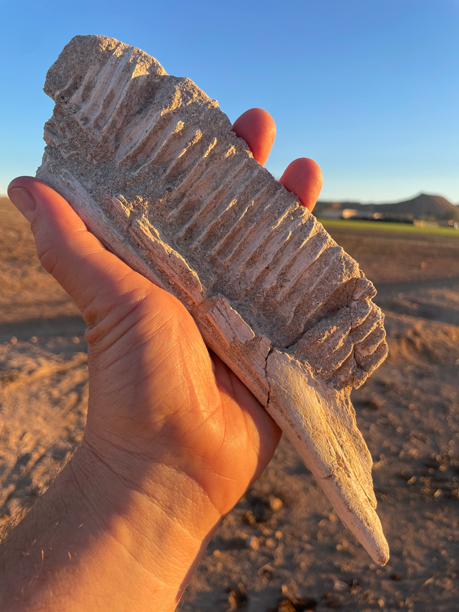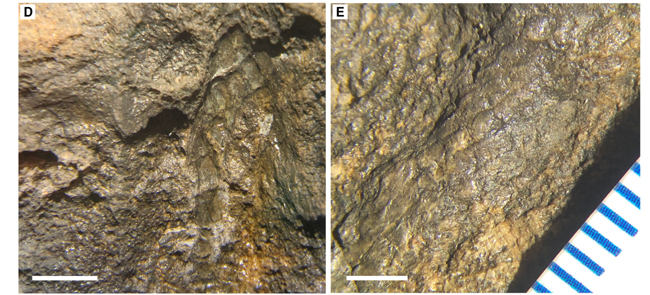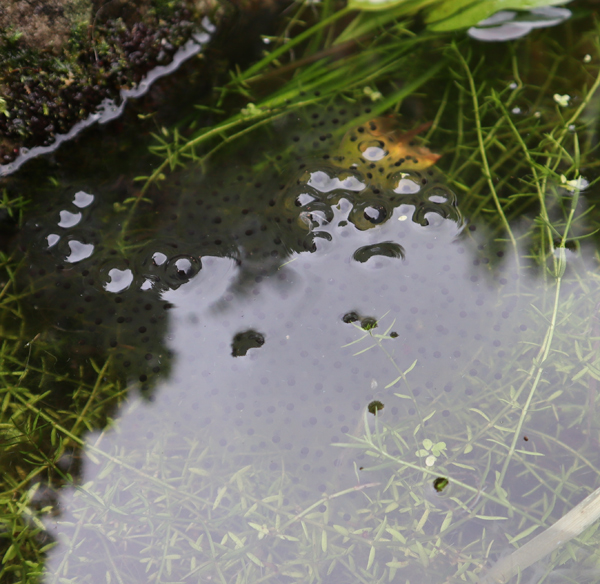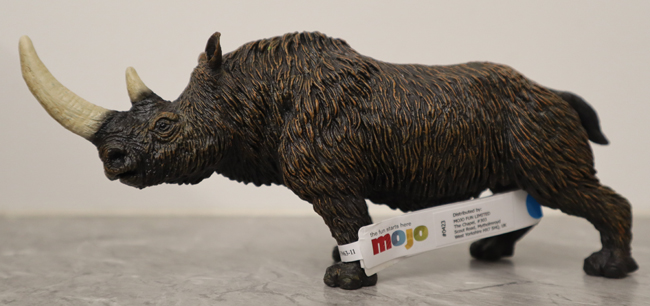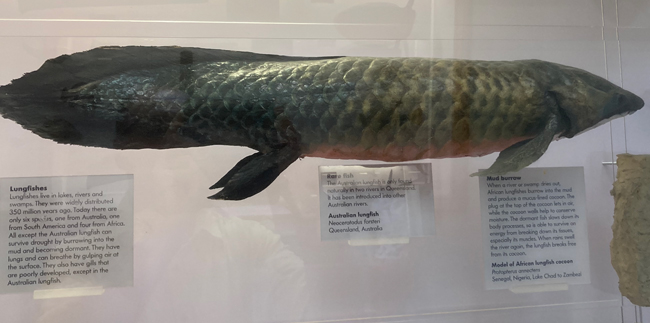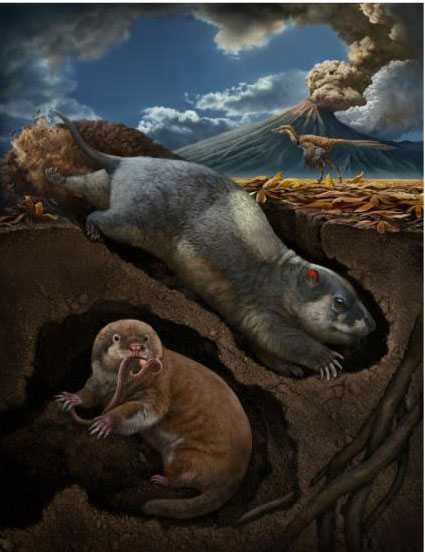Studying Sea Scorpion Fossils – How Did Eurypterids Breathe?
The eurypterids were an extremely successful group of arthropods. These animals are often referred to as “sea scorpions”. However, their taxonomic relationship to extant scorpions remains unclear and they were not confined to marine environments. These invertebrates are members of the Subphylum Chelicerata (claw horns) and are members of the Eurypterida Order. Approximately 250 different species have been named. One of the fascinating aspects of eurypterids is understanding how they breathed.

Picture credit: Everything Dinosaur
How Did Eurypterids Breathe?
Most palaeontologists believe that eurypterids evolved in marine environments. However, fossils have been found in association with estuarine and freshwater environments. Carboniferous trackways suggest that some eurypterids may have been amphibious and able to spend some time on land.
No eurypterid is thought to have been wholly or primarily terrestrial. There is some remarkable fossil evidence to suggest that they did evolve air-breathing organs. When discussing respiration, it is thought that the primary organs of aquatic respiration are likely to have been retained at least in part.
The extant horseshoe crab (Limulus) may provide an analogue. These animals inhabit marine environments although they do venture into shallow water to mate and onto the shore to lay eggs. Horseshoe crabs have five pairs of gills located on their abdomen (Opisthosoma). Each pair of gills consists of flap-like structures covering a series of membranes that resemble the pages from a book. These are called lamellae, but their morphology has given rise to the popular term “book lungs”. Oxygen is absorbed via gaseous exchange on the surface area of the lamellae.
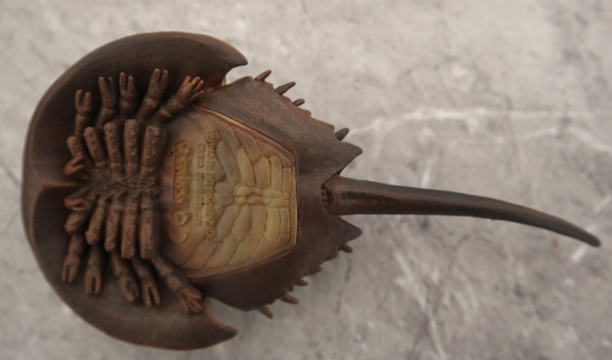
Picture credit: Everything Dinosaur
The image (above) shows a ventral view of the popular CollectA horseshoe crab model.
To view the range of CollectA models in stock: CollectA Prehistoric Animal Models and Figures.
Four Pairs of Book Gills or Five?
Debate still continues as to whether eurypterids had four pairs of book gills or five. A specimen of Onychopterella augusti from Late Ordovician strata located in South Africa preserved four pairs of vertical book gills. The book gills were located in the third to sixth segments of the abdomen. It has been suggested that all eurypterids had four pairs of book gills rather than the five pairs seen in xiphosurans such as horseshoe crabs.
Terrestrial scorpions also have four pairs of vertically orientated book lungs, located in the third to sixth body segments. It is not known whether this is case of synapomorphy (shared characteristic different from that of their latest common ancestor). This anatomical similarity could indicate that scorpions (Order Scorpiones) are more closely related to eurypterids than previously thought. The phylogenetic relationship between eurypterids and other members of the Arthropoda remains controversial.
Pancaked Sea Scorpion Fossils
Unfortunately, most fossil specimens of eurypterids are squashed flat and may only represent exuviae (shed exoskeletons after moulting [ecdysis]).
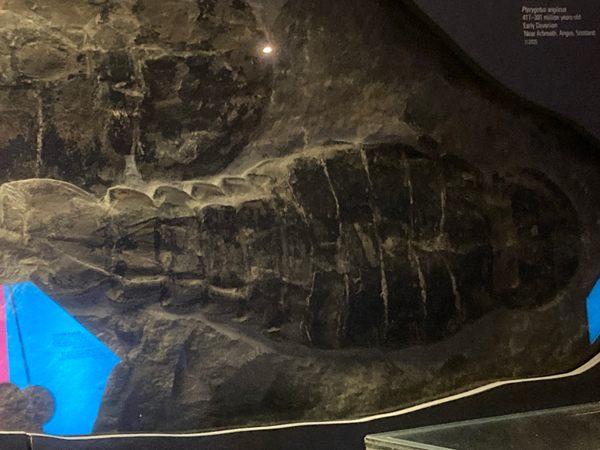
Picture credit: Everything Dinosaur
Visit the Everything Dinosaur website: The Everything Dinosaur website.


